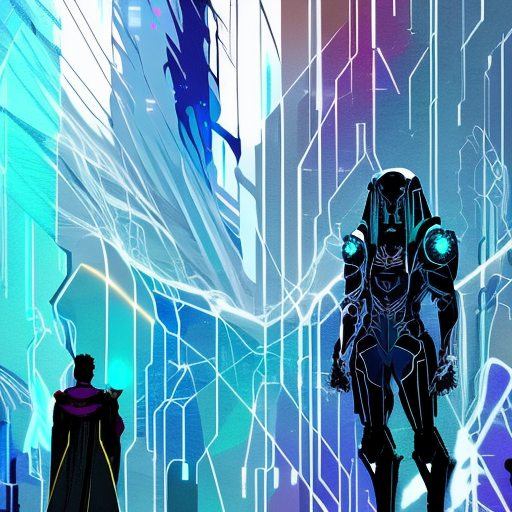One-line Summary:
In the science fiction novel “Hyperion,” a group of pilgrims share their stories on a dangerous journey to the mysterious Time Tombs, each revealing their deepest desires, fears, and secrets.
The Pilgrimage to Hyperion
In the far future, humanity has colonized numerous planets across the galaxy, and the Hegemony of Man rules over them all. On the planet Hyperion, a group of seven pilgrims embarks on a dangerous journey to the Time Tombs, ancient structures that are rumored to be guarded by a fearsome creature known as the Shrike. Each pilgrim has been chosen for their unique connection to the Time Tombs and their own personal motivations.
The Tales of the Pilgrims
As the pilgrims travel towards Hyperion, they take turns sharing their stories, revealing their pasts, and exploring the mysteries of the universe. Each tale is distinct and offers a different perspective on the world they inhabit.
The first pilgrim, a priest named Father Lenar Hoyt, recounts his encounter with the Bikura, an alien race with a unique religion centered around pain and suffering. Hoyt’s story delves into themes of faith, sacrifice, and the nature of God.
The second pilgrim, a soldier named Colonel Fedmahn Kassad, shares his experiences fighting against the Ousters, a group of humans who have embraced genetic modifications and live on the fringes of society. Kassad’s story explores the horrors of war, the ethics of genetic engineering, and the complexities of identity.
The third pilgrim, a scholar named Martin Silenus, tells the tale of his rise to fame as a poet and his subsequent fall from grace. Silenus’s story delves into the power of art, the pursuit of immortality, and the consequences of success.
The fourth pilgrim, a detective named Brawne Lamia, recounts her investigation into the murder of a renowned scientist and the discovery of a powerful artifact. Lamia’s story explores themes of love, loss, and the lengths one will go to protect those they care about.
The fifth pilgrim, a diplomat named Sol Weintraub, shares the heartbreaking story of his daughter’s illness and his desperate search for a cure. Weintraub’s story delves into themes of family, sacrifice, and the nature of time.
The sixth pilgrim, a poet named Het Masteen, reveals his connection to the Shrike and the haunting visions he experiences. Masteen’s story explores themes of destiny, fate, and the blurred lines between reality and perception.
The seventh pilgrim, a scholar named Severn Danyel, tells the story of his involvement in the Hegemony’s political machinations and his quest for power. Danyel’s story delves into themes of ambition, corruption, and the consequences of unchecked authority.
The Conclusion and Key Takeaways
As the pilgrims’ tales unfold, the true nature of the Time Tombs and the Shrike becomes clearer. The novel explores themes of religion, technology, humanity’s relationship with the universe, and the power of storytelling itself. It raises questions about the nature of consciousness, the limits of knowledge, and the choices we make in the face of uncertainty.
Key takeaways from “Hyperion” include:
- The power of storytelling to shape our understanding of the world
- The complex interplay between religion and technology
- The consequences of unchecked ambition and authority
- The exploration of identity and the nature of humanity
- The nature of time and its impact on our lives
“The universe is a pretty big place. If it’s just us, seems like an awful waste of space.” – Martin Silenus
In conclusion, “Hyperion” is a thought-provoking and epic science fiction novel that weaves together multiple narratives to explore profound philosophical and existential questions. It challenges readers to contemplate the nature of humanity, the power of storytelling, and the mysteries of the universe.












